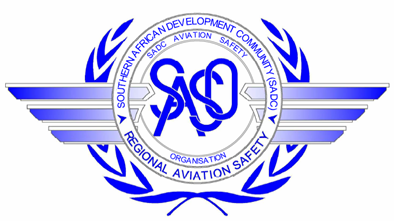SADC Member States are expected by the international aviation community to implement the eight critical elements (CE) essential for an effective safety oversight system according to the International Civil Aviation Organisation (ICAO). When this does not happen, an ICAO Significant Safety Concern (SSC) may be generated creating a negative impact upon the growth of the economy in the region. Other factors that may affect industry growth include:
- Trust of customers in the services provided;
- Sufficient/insufficient government oversight;
- Infrastructure or lack thereof;
- Improvements in quality and pricing of air services; and
- Increase/decrease in tourism in the region.
It is the mandate of SASO to assist Member States in resolving safety issues in the region as stated above. As a success driver behind the region's achievement of world standards in civil aviation safety, SASO will assist Member States reduce the number of SSCs in the region and achieve full compliance with the eight critical elements, namely:
- CE 1 – primary aviation legislation;
- CE 2 – specific operating regulations;
- CE 3 – state civil aviation system and safety oversight functions;
- CE 4 – technical personnel qualifications and training;
- CE 5 – technical guidance, tools and provision of safety critical information;
- CE 6 – licensing, certification, authorisation and/or approval obligations;
- CE 7 – surveillance obligations; and
- CE 8 – the resolution of safety concerns.
As stipulated in Article 7 - Functions of SASO and subject to Article 4.3 under Establishment of SASO, the safety management functions of the SASO shall include to:
- liaise with ICAO and Member States to ensure that the aviation safety oversight activities of the Member States are in line with ICAO objectives and plans;
- plan and facilitate the sharing between Member States of technical expertise and facilities in civil aviation;
- develop and implement a Regional Safety Programme including safety reporting systems and assist Member States in developing their State Safety Programs within the ICAO framework;
- co-ordinate civil aviation safety oversight activities amongst Member States;
- mobilize and solicit technical and financial resources from external sources;
- establish and maintain relations with other regional safety oversight systems including Regional Safety Oversight Organisations (RSOOs) in all areas of civil aviation to facilitate the transfer of knowledge and expertise and adoption of best industry practices;
- perform other duties that may be necessary for the proper implementation of its regional civil aviation safety oversight functions.
- develop and implement programmes which will best benefit the SADC Region;
- assist aviation industry in the Member States in the development and implementation of Safety Management Systems (SMS);
- establish and maintain an accident and incident database to facilitate the effective analysis of information on actual or potential safety deficiencies obtained, including that from its incident reporting systems, and to determine any preventive actions required;

